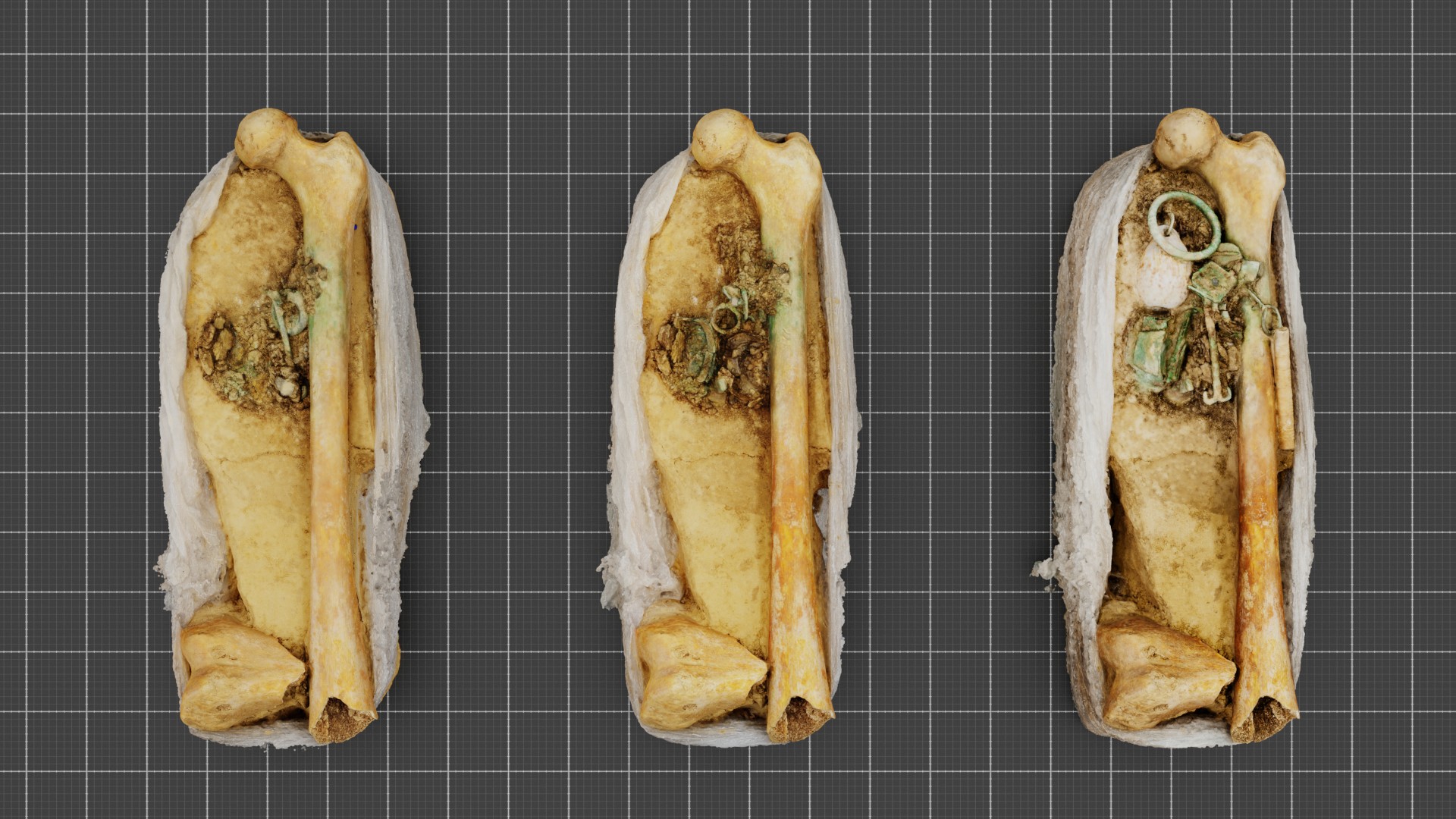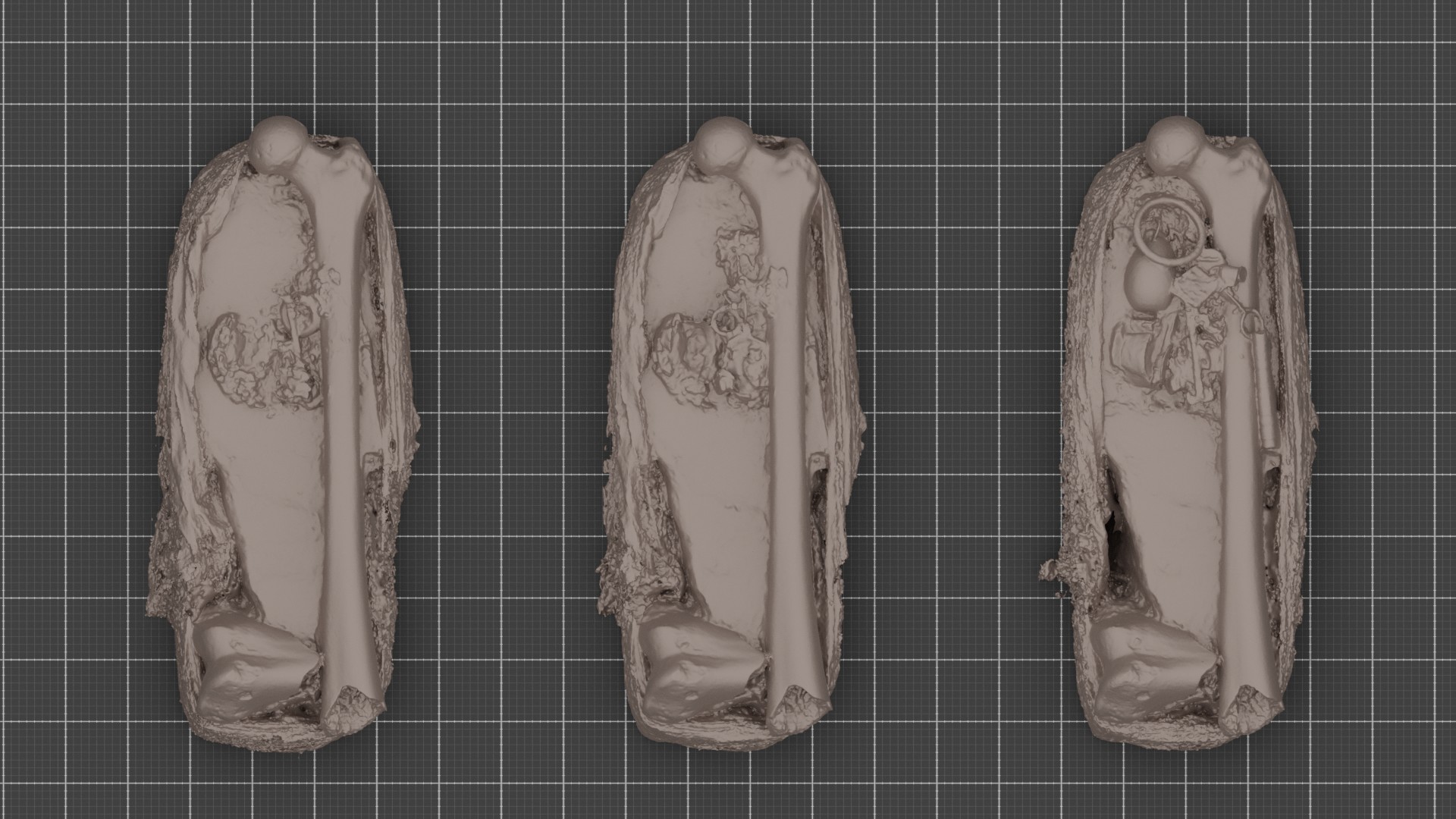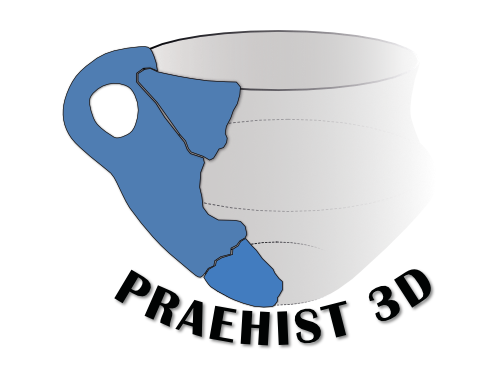A new project for 2021
Over the last few years, I have repeatedly processed block recoveries as 3D scans. These are used by researchers on site to map their finds and to preserve the work steps during the excavation.
In archaeology, it is an unavoidable fact that everything we examine is changed during the investigation. Finds are recovered, findings are destroyed. All work steps are documented in detail using drawings and photos, but these always reflect the perspective and goals of the researcher conducting the investigation and are therefore subjectively colored. This is not meant to be an accusation, but merely an indication of unavoidable processes to which all researchers are subject. Since the findings (layers, discoloration of the soil or differences in substrate) are inevitably destroyed during the excavation, we only have one chance to document them. Often, special findings can only be felt haptically or are difficult to photograph, as time is usually in short supply in field work. Drawings reflect the understanding of the findings and the interpretations of the investigator. At the same time, images, photos and drawings mostly contain only one viewing dimension and a relatively low information density.
During the excavation, it is therefore crucial to record as much information as possible in the shortest possible time.
3D models can be of crucial help here. The basic data can be recorded during the excavation by expanding the photo documentation that is already required and then converted into 3D models afterwards. If the area recorded is chosen generously enough, new conclusions can even be drawn from the models later and hypotheses that served as working guidelines during the excavation can be tested.
It is as if the excavation were frozen and preserved for later viewing.
Block salvaging from graves
The blocks presented here in the first posting were recovered from a rich burial during the in situ excavation and later uncovered by restorers in the laboratory. The actual burial contains two further block recoveries, the skull and an organic object, which will become part of further postings.
remote 3D model creation
Since time is a precious resource in the laboratory, we decided to use a somewhat unusual approach for these block recoveries.
The researchers on site were sent instructions on how to correctly capture the base images for 3D photogrammetry. They then used these to take all the necessary photos at a time that suited them during processing and sent them to me. I then downloaded these, created the models and prepared the models as well as the required render images.
On average, the restorers had the data they needed in their hands 12-24 hours after the data was sent to continue their work.
Femurs, bronze finds, shells and amulets in 3D
The renders of the models were created with Blender 3D and rendered in Cycles.

From right to left, three planas of a small block recovery can be seen here. It was created to better examine the hodgepodge of bronze objects, shells and amulets that were probably attached to the belt. I do not yet know whether these were carried in a bag on the body.

The objects and their decorations can be seen more clearly in the shaded, monochrome view. The circumferential grooves on the conical leg pendant are particularly easy to see. These amulets, usually made from antler ends, were formerly known as Donar clubs and spread during the Roman Imperial period and into the Migration Period from the Ukraine through the Balkans to Northern and Western Europe.
During my studies, I spent a very long semester working on this very amulet form and mapped and compiled the finds and their chronological and spatial distribution in detail.
So I had to smile when a new find of this form was found on the first level of this block recovery.
Videotests with Eevee
Since Blender version 2.8 has been able to produce extremely detailed renderings in real time, I used these extremely detailed models (about 1.5 million polygons per model) to test how complex a preview video of these objects would be.
The amazing result was that it only took 1 hour to render this short clip in HD.
Compared to previous iterations of the program, this is a significant speed boost that makes even longer animations feasible.
Outlook
That’s it for now. As soon as there is further progress on these models, part two of the postings will follow.
Are you interested in 3D scans, prints, reconstructions, workshops or questions?
